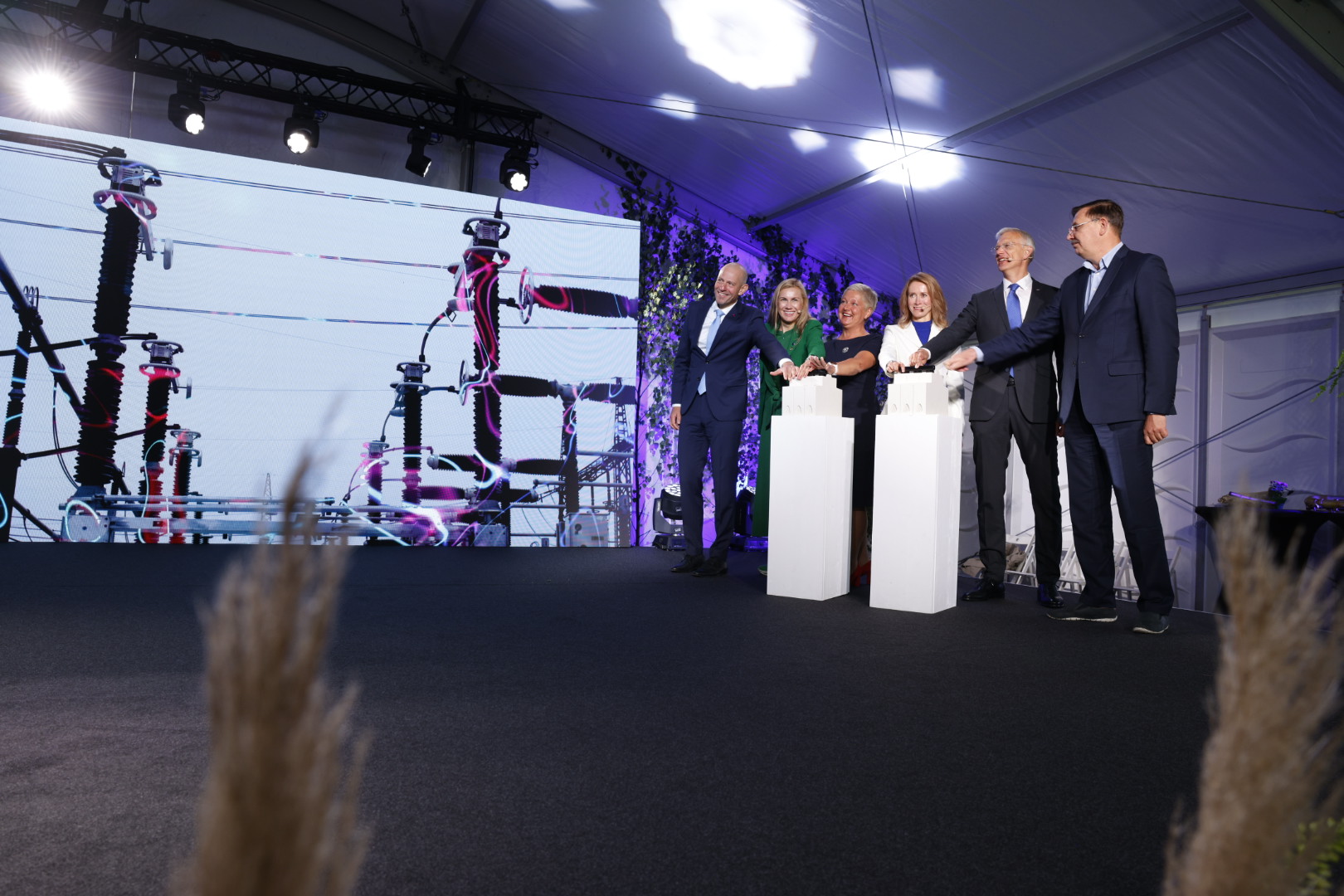Estonian electricity system operator Elering and the Latvian system operator AST formally launched the third Estonian-Latvian electricity connection on Wednesday, which inter alia creates the prerequisites for developing an offshore network and the related building of offshore wind farms.
The new connection contributes to the security of supply and creates the prerequisites for developing energy trading and disconnecting the Baltic States from the Russian power grid. In future, the connection will in turn be connected with a submarine network that will be jointly built by the system operators of the countries bordering the Baltic Sea. “The new electricity connection with Latvia starting from the outskirts of Tallinn firmly binds the power grids of our countries, which is required for ensuring the security of supply for Estonian consumers, separating the power grids of the Baltic States from Russia, as well as for connecting the future offshore wind farms with the Estonian power grid,” said Taavi Veskimägi, Chairman of the Management Board of Elering.
According to Prime Minister Kaja Kallas, the new connection plays an important role in reducing carbon emissions and developing an environmentally friendly energy system. “In order to meet climate and renewable energy goals, Estonia plans to invest in the development of offshore wind farms. Strengthening the electrical connections between Estonia and Latvia allows us to connect the production capacities of renewable energy into the power grid to a great extent and creates opportunities for other offshore wind farm developments,” she said.
The new connection adds approximately 600 megawatts of transmission capacity between the two countries. The connection has been operating since the beginning of the year. 200 million kWh of electricity has been transmitted via the connection from January to July.
On Estonian territory, the third Estonian-Latvian connection comprises the Harku-Lihula-Sindi 330/110 kV line and the Kilingi-Nõmme-Riga 330 kV line section to the Estonian/Latvian border. The length of the two lines is approximately 190 kilometres. The lines are supported by a total of 463 transmission towers, including the design pylon Soorebane located at Risti. The construction work of the lines in Estonia was performed by Empower and Leonhard Weiss.
Elering used European Union support for financing the construction work of the third Estonian-Latvian connection to an extent of 65 percent. The remainder was covered by the auction revenue of transmission capacity between the countries. Estonian electricity consumers do not have to contribute to financing the new connection via network fees.
The total cost of the new Estonian-Latvian electricity connection for the two countries is approximately 170 million euros, of which 112 million euros is financed by the European Union.
Source: Elering


